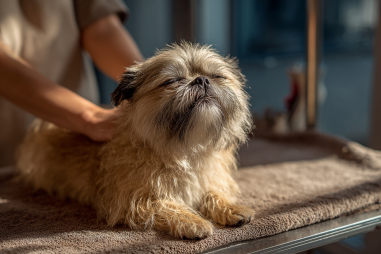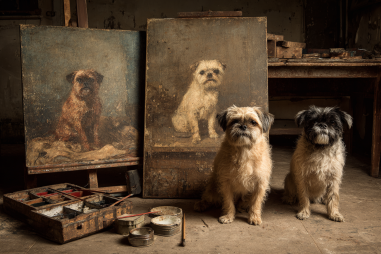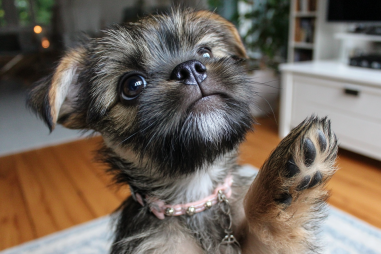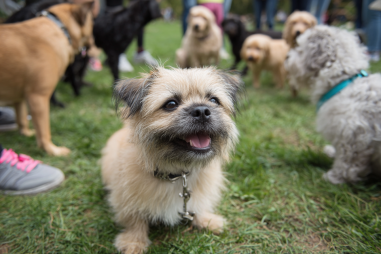Adopting a Brussels Griffon is an exciting journey filled with joy, companionship, and unconditional love. These charming little dogs have big personalities packed into a small frame, making them a beloved breed for many dog lovers. However, bringing a Brussels Griffon into your home requires preparation, patience, and a commitment to their unique needs. Whether you’re a first-time dog owner or adding another furry friend to your family, these top tips will guide you through a smooth adoption process and help you give your new Griffon the loving, forever home they deserve.
What to Know Before Adopting a Brussels Griffon
Before deciding to adopt a Brussels Griffon, it’s important to learn about their personality, temperament, and care requirements. These dogs are known for their distinctive looks, including their expressive face and often quirky, charming demeanor. Griffons are intelligent, alert, and can be quite affectionate, but they also tend to be sensitive and can sometimes be stubborn.
One key aspect to consider is their size—they are a small breed, usually weighing between 8 to 12 pounds, which makes them suitable for apartment living but also prone to certain health issues like respiratory problems due to their short snouts. You should be ready to provide them with regular vet care, grooming, and mental stimulation to keep them happy and healthy.
Because Brussels Griffons are people-oriented dogs, they thrive on companionship and may develop separation anxiety if left alone for long periods. This means your lifestyle should ideally allow for plenty of interaction and bonding time. Understanding this sensitive nature and commitment to their emotional well-being is critical before welcoming one into your home.
Finding Reputable Breeders and Rescue Groups
If you decide to adopt a Brussels Griffon, sourcing your new companion from responsible places is vital. There are two main paths: reputable breeders and rescue groups.
When choosing a breeder, look for someone who prioritizes the breed’s health, temperament, and well-being over profit. Good breeders will provide health clearances for the puppy’s parents, allow you to meet the dogs in person, and offer guidance throughout your adoption process. Avoid puppy mills or anyone who seems to be mass-producing puppies without proper care and socialization.
Alternatively, Brussels Griffon rescues are wonderful places to find adult dogs or puppies in need of a forever home. Rescue organizations thoroughly vet their dogs and often provide medical care, behavioral assessments, and foster homes before adoption. This allows you to learn about the dog’s personality upfront and get support with the transition to your household.
To find reputable breeders or rescue groups, check websites for the American Brussels Griffon Association, breed-specific rescues, or general pet adoption platforms. Ask for references and reviews from other dog owners to ensure you’re dealing with trustworthy sources.
Preparing Your Home for Your New Dog
Bringing a Brussels Griffon into your home requires some upfront preparation to ensure a safe and welcoming environment. Start by choosing a quiet, comfortable spot for your dog’s crate or bed, where they can retreat and feel secure. Since Griffons are small and curious, make sure your home is puppy-proofed—remove or secure items that could be chewed or swallowed, cover electrical cords, and keep harmful substances out of reach.
Gather essentials like food and water bowls, high-quality dog food, grooming tools, toys, and a collar with an ID tag. Investing in a harness rather than just a collar is recommended to protect their delicate neck, especially during walks.
Since Brussels Griffons have a medium length coat that requires grooming, setting up a regular grooming station and schedule will help keep their coat clean, prevent mats, and reduce shedding. Additionally, introduce your dog to leash walking inside your home or yard before venturing outside to make the experience less intimidating.
Introducing the Dog to Family Members and Pets
The first interactions your new Brussels Griffon has with family and other pets can set the tone for their adjustment. Introduce everyone calmly and gradually to minimize stress. When meeting children, teach them how to handle the dog gently and respectfully because Griffons can be sensitive to rough treatment.
If you already have pets, particularly other dogs or cats, supervise all initial encounters closely. Brussels Griffons usually have a friendly disposition but may take a little time to warm up to other animals. Using positive reinforcement, such as treats and praise, during introductions can create positive associations and ease integration.
Creating a consistent routine and providing individual attention to your new dog can reassure them during this transition period. Make sure each family member knows and respects the rules and boundaries you set to avoid confusing your new companion.
Early Care and Adjustment
The first few weeks after adoption are crucial for your Brussels Griffon’s adjustment to their new home. Be patient as your dog learns the routines and expectations, and watch for signs of stress such as hiding, whining, or changes in appetite.
Establish a feeding schedule and take your new dog outside frequently for bathroom breaks to reinforce house training. Consistency with commands and routines helps build trust and confidence. Keep training sessions short and fun to maintain your dog’s interest, and always reward good behavior with treats, toys, or affection.
Because Brussels Griffons are prone to certain health concerns like respiratory issues or dental problems, scheduling a vet checkup soon after adoption is important. The vet can help you set up a vaccination schedule and give advice about diet, exercise, and grooming based on your pup’s specific needs.
Socialization during this phase should be positive and gentle, exposing your dog to various sights, sounds, and environments while avoiding overwhelming experiences. Building a strong bond and trust with your pup will lay the foundation for a happy and secure life together.
Commitment to Lifelong Care
Adopting a Brussels Griffon isn’t just about the first few months—it’s a lifelong commitment to their care and well-being. These dogs generally live 12-15 years, and providing consistent exercise, nutrition, mental stimulation, and affection is essential for a happy life.
Regular grooming, including brushing a few times a week and occasional professional trims, keeps their coat in good shape. Dental care is especially important for this breed, so brushing their teeth regularly and scheduling dental cleanings with your vet will help prevent common oral health issues.
Keep up with routine vet visits for vaccinations, parasite prevention, and health screenings to catch any potential problems early. Providing mental enrichment through games, training, and interactive toys helps prevent boredom and behavioral issues.
Finally, remember that Brussels Griffons thrive on love and companionship. Including them in family activities, giving plenty of attention, and ensuring they never feel neglected will keep your bond strong and your Griffon happy throughout their life.
Adopting a Brussels Griffon is a wonderful way to add a loving and loyal member to your family, but it requires thoughtful preparation and ongoing care. By understanding their unique characteristics, finding a responsible source, preparing your home, introducing members carefully, and committing to their lifelong needs, you can ensure a smooth transition and build a joyful, lasting relationship with your new companion.







